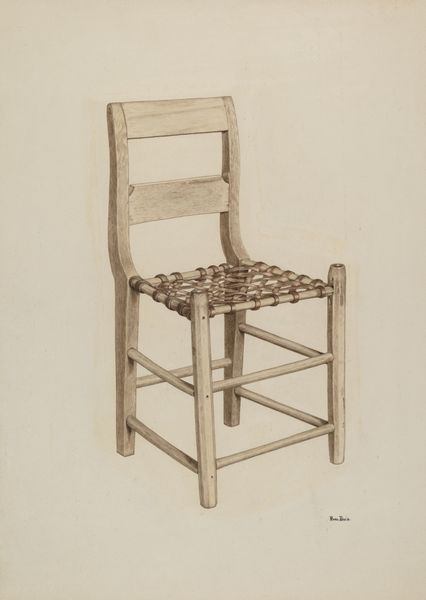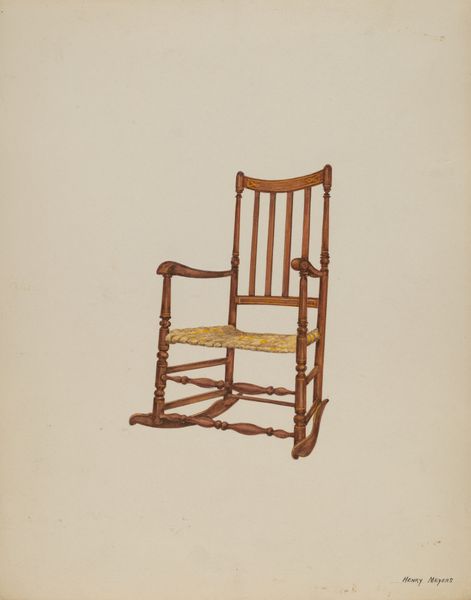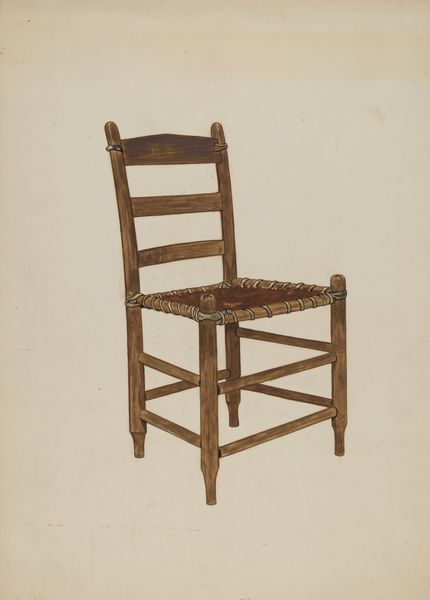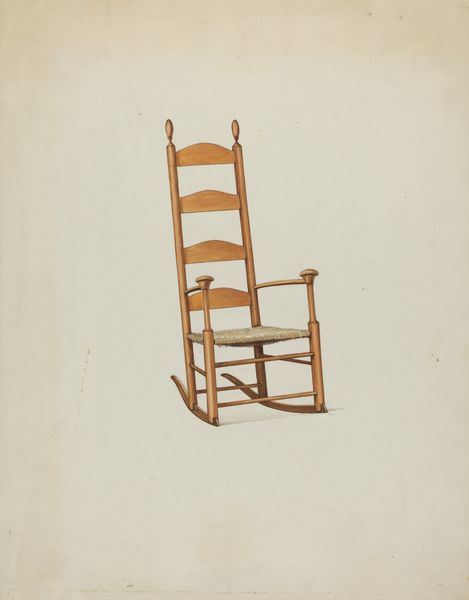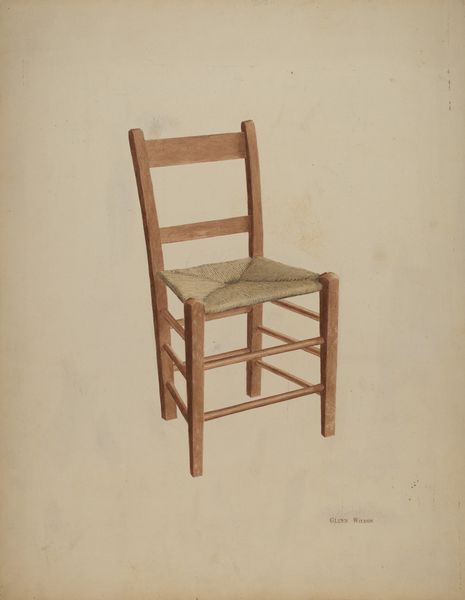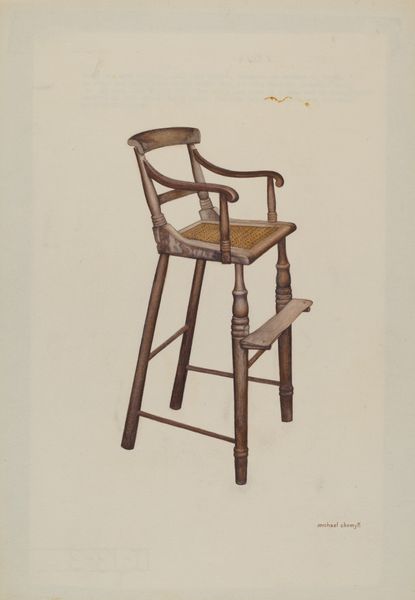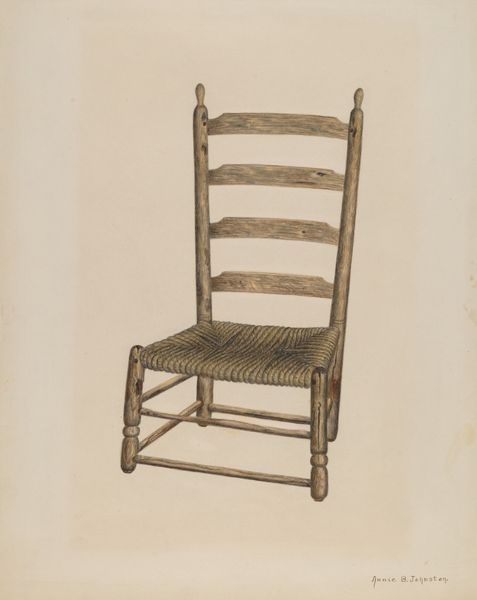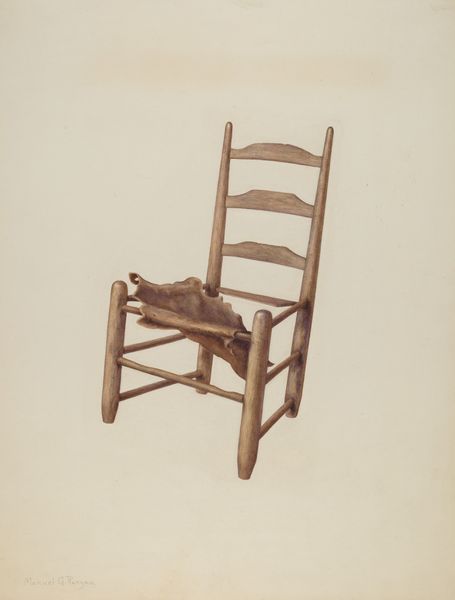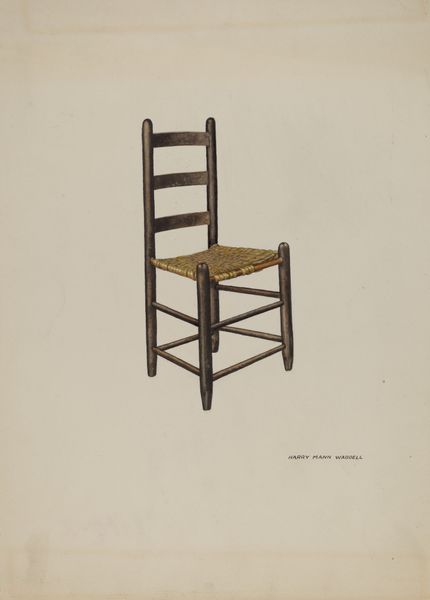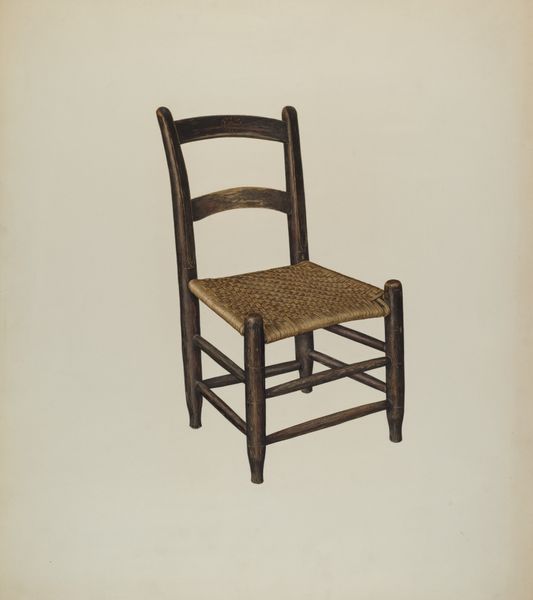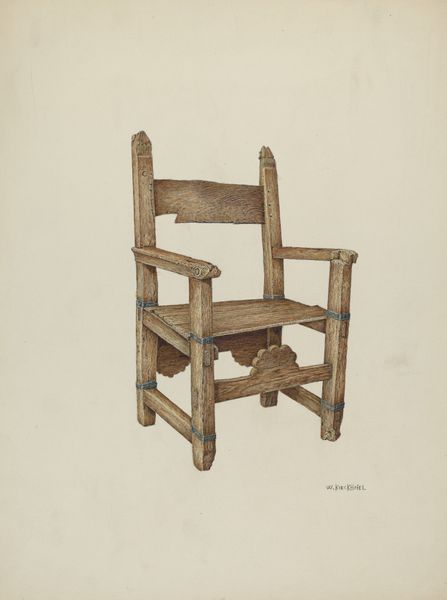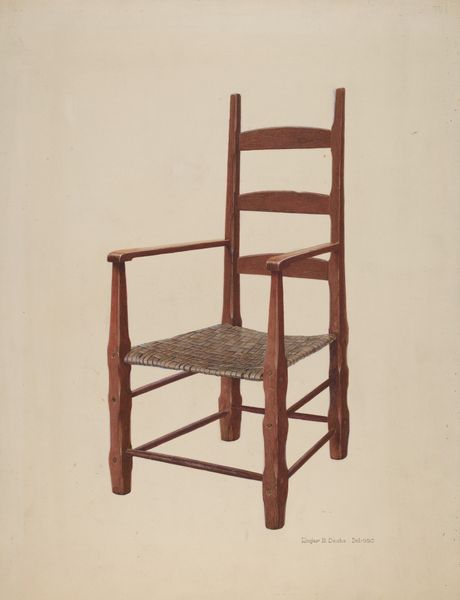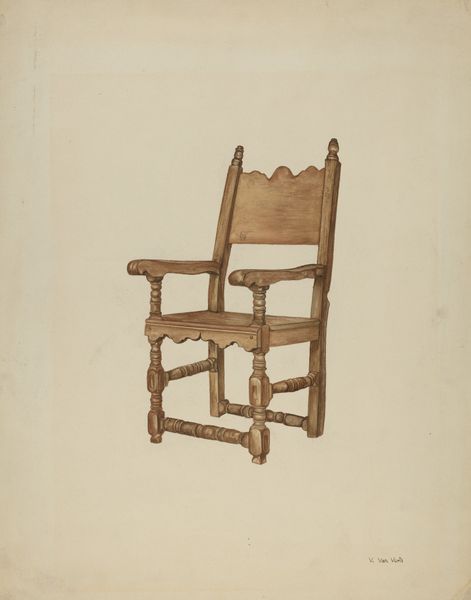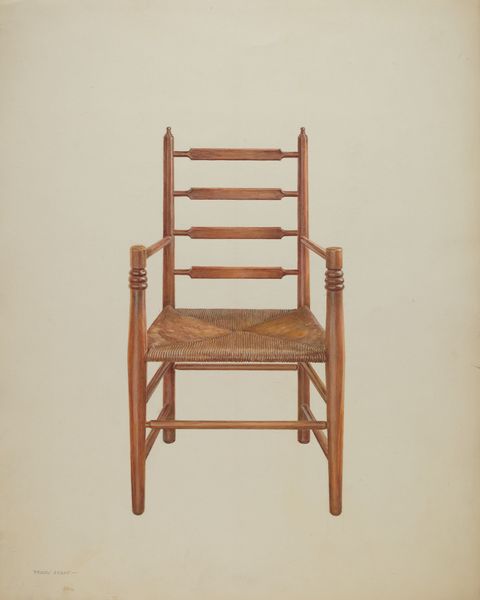
drawing, painting, watercolor
#
drawing
#
painting
#
watercolor
#
watercolour illustration
#
watercolor
#
realism
Dimensions: overall: 35.1 x 24.4 cm (13 13/16 x 9 5/8 in.) Original IAD Object: 25"high; seat 15"wide x 14 1/2".
Copyright: National Gallery of Art: CC0 1.0
Curator: Take a moment with Annie B. Johnston’s watercolor painting, "Handmade Chair," circa 1938. It presents a single wooden chair, rendered with careful realism against a blank background. Editor: Immediately striking. There's something mournful about this ordinary object depicted with such care. The dilapidated seat suggests years of use. It evokes questions about the labor and the life of whoever owned that chair. Curator: Johnston was deeply interested in representing vernacular objects. These items served as tangible connections to the past. They spoke of communities grappling with modernization and cultural preservation, especially in the context of the Depression era. We see how she highlights gender, race, and class through commonplace, handmade material items. Editor: Absolutely. Looking closely at the chair's construction, you get a sense of improvisation. It isn't refined. Every joint and surface hints at the handcraft behind it. What sort of wood do you think she’s rendering here? It is roughhewn. Curator: Given the time and place, it's likely a locally sourced, inexpensive wood. But for Johnston, the value wasn’t inherent in the materials, rather in what those materials signified socially and economically. What lives and identities can we associate with the work itself? Editor: Exactly! And in how accurately the labor appears through observation. Johnston clearly focused on texture and the signs of wear and tear. That ragged seat is the star here. How does she transform such a modest subject into something worthy of our attention? Curator: In many ways, the subject is anything but modest. This is how vernacular objects gain access to conversations around high and low art—which becomes inherently democratizing. Editor: It’s an open invitation to reflect on value and worth. How do we assign meaning to something so humble, made of raw resources? Curator: Ultimately, this humble chair sits at a crossroads between representation and experience, asking us to reconsider history itself. Editor: It does invite quiet contemplation. This is more than just an object. We’re dealing with an eloquent depiction of labor and time.
Comments
No comments
Be the first to comment and join the conversation on the ultimate creative platform.
